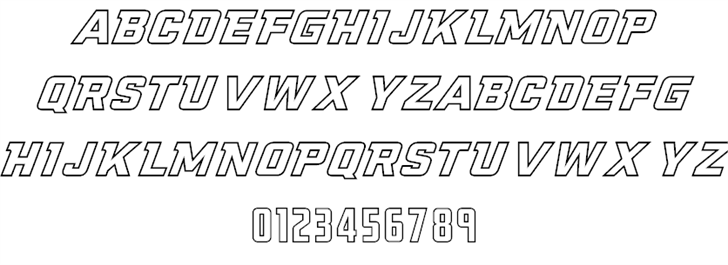
First of all, we build up the first avail-able large-scale VFR dataset, named AdobeVFR, consisting of both labeled synthetic data and partially labeled real-world data. We study the Visual Font Recognition (VFR) problem, and advance the state-of-The-Art remarkably by developing the DeepFont system. We also achieve around 6 times compression of the model without any visible loss of recog-nition accuracy.Ībstract = "As font is one of the core design concepts, automatic font identification and similar font suggestion from an image or photo has been on the wish list of many designers. The DeepFont system achieves an ac-curacy of higher than 80% (top-5) on our collected dataset, and also produces a good font similarity measure for font selection and suggestion. Moreover, we study a novel learning-based model compression approach, in order to reduce the DeepFont model size without sacrific-ing its performance. Next, to combat the domain mismatch between available training and testing data, we introduce a Convo-lutional Neural Network (CNN) decomposition approach, using a domain adaptation technique based on a Stacked Convolutional Auto-Encoder (SCAE) that exploits a large corpus of unlabeled real-world text images combined with synthetic data preprocessed in a specific way. Use of the seal of the University of Illinois is approved and monitored by the Board of Trustees of the University of Illinois.As font is one of the core design concepts, automatic font identification and similar font suggestion from an image or photo has been on the wish list of many designers.

A link to the brand web pages should be sent to external organizations in order to ensure the proper usage of the U of I System logo. Otherwise, the visual size and placement should reflect the contribution of the partnership. If it is an equal partnership, the logos must visually appear equal in size and placement. The U of I System logo should proportionally reflect the degree of contribution. There are situations in which the U of I System logo must coincide in placement with logos from external organizations. If under special circumstances in which white, black, or blue text cannot be used, chose a sold, dark color. When color usage is prohibited, use black on a white field, or white on a black field.Ħ. When appearing over a lighter colored field or photography, use black or U of I blue.ĥ. When appearing over a darker colored field or photography, use white.Ĥ. Colored university icons can be used with a black wordmark when highlighting the universities in the system is desired.ģ. When appearing in one color on a white field use black or U of I blue.Ģ. outlined, made to look hand-drawn, given a drop shadow, or otherwise).ġ. The logo should only be rendered in the pre-defined colors, with few exceptions (see below).Never change the proportion of the logo as a whole or any of the individual elements, including the font, the university icons, and theme.A good rule of thumb is to have a minimum of the height of the "U" around the logo Always make sure to allow for plenty of space around the logo.See our FAQ for example and more information. U of I System units and offices can have an official logo lockup with their office name. Versions with colored university icons are also available. Black, reversed white, and navy blue are available. One-color versions are preferred when possible for unity and clarity. Should you need a different version of the text-only wordmark, contact University Relations.

The U of I System wordmark alone, without the logo artwork, is acceptable but not preferred. The variations with the theme are intended for marketing and advertising purposes where the text of "altogether extraordinary" does not appear elsewhere, as in a headline or payoff copy. Based on context and placement, the preferred versions of the logo offer layout flexibility.


 0 kommentar(er)
0 kommentar(er)
